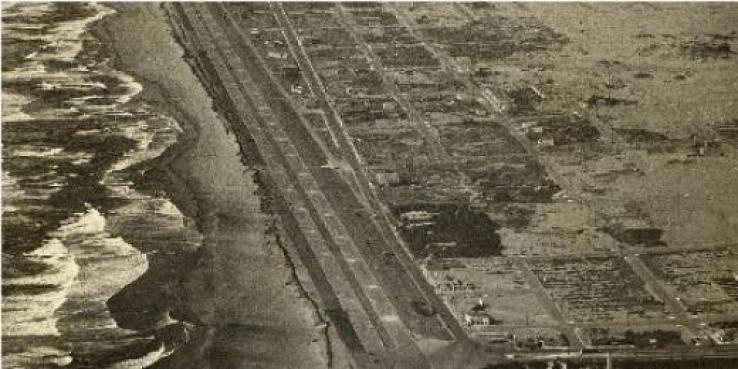The Coastal Management Framework (CMF) is a new project that sets the stage for implementation of the Ocean Beach Master Plan’s (OBMP) approach to coastal management through the year 2050 in the context of severe erosion and climate-induced sea level rise. The OBMP presents a series of recommendations designed to improve and restore conditions at Ocean Beach- including managed retreat, beach nourishment, and innovative approaches to protecting threatened infrastructure while maintaining recreational access and ecological functions. The Framework will include interim protection strategies in anticipation of extreme weather events, as well as a long-term strategy for adapting to sea level rise, and it will lay the foundation for an interagency coastal management agreement among the three major responsible agencies, San Francisco Public Utilities Commission (SFPUC), Golden Gate National Recreation Area (GGNRA) and the United States Army Corps of Engineers (USACE).
SPUR has been working closely with SFPUC and GGNRA staff to scope this project. In January, SPUR hired a team of coastal engineering consultants led by Bob Battalio at ESA PWA and Dilip Trivedi at Moffatt & Nichol. Other team members include AGS, Inc. and Jacobs Engineering, as well as coastal plant ecologist, Peter Baye. On January 31st, 2013, SPUR kicked off the CMF project with participants from the SFPUC, GGNRA, USACE, San Francisco Department of Public Works (DPW), and the consultant team.
Interim Planning
The team’s first task will create a near-term (1-10 year) approach to coastal management. Over the next few months, the consultant team will work with SFPUC, GGNRA and USACE to investigate best practices and case studies for innovative coastal protection strategies, emphasizing options that are reversible, minimally impactful, and compatible with Ocean Beach Master Plan recommendations. The interim approach will build on recent successes using softer approaches to coastal protection, including the use of temporary sandbags and the placement of large quantities of excess sand from the north end of the beach.
The team will also identify key triggers phasing of coastal protection measures at Ocean Beach.
Over a longer time scale, the team will develop an approach to cleaning up debris and rubble south of Sloat Boulevard, as well as a managed retreat approach for gradually closing the Great Highway south of Sloat, allowing for the coastline to recede and for new restoration and recreational opportunities. This process will require careful coordination with the California Coastal Commission, as well as OBMP stakeholders, in determining the best strategy.
Coastal Engineering Feasibility Studies
The next task will result in the production of two studies, a Coastal Vulnerability Analysis Study, and a Coastal Engineering Feasibility Study, to test and develop the concepts outlined in the OBMP. The first is an expanded analysis of existing and projected coastal hazards through erosion and flooding, taking account of the complex dynamic processes that shape the coast... The second study will analyze the vulnerability of coastal infrastructure and will develop a suite of protection measures, such as managed retreat, sand placed through beach nourishment, dynamic cobble berms and low-profile structures. This effort will develop a “multi-objective” approach to coastal protection, meaning that it will address ecological, recreational, and aesthetic considerations along with engineering and cost imperatives.
Coastal Protection In-Situ Pilot Studies
The team will also recommend and design pilot studies of coastal protection measures at Ocean Beach, studying the performance and behavior of different interventions in the unique and challenging conditions there. The interplay of the underlying geology, existing and placed sand, exposed fill, and innovative tools like dynamic cobble berms needs to be better understood to support an adaptive approach to coastal management at Ocean Beach, and these studies would provide critical information.
Interagency Coastal Management Agreement
Ultimately, SPUR and its partners will produce a Coastal Management Framework Report that will provide the basis of an agreement among the SFPUC, Army Corps, and GGNRA. This agreement would include a 40-year Coastal Protection Strategy, including a strategy for Capital Planning to fund these construction projects and a strategy for moving these projects through the environmental review and permitting process.
Moving Forward
Throughout this process, SPUR will coordinate the work of the team and agency partners, continue its public outreach efforts, and steward the Ocean Beach Master Plan vision. Keep an eye on our blog, Facebook, and Twitter for additional updates on OBMP’s Implementation Studies, including more detailed posts on the Transportation and Joint Open Space Planning projects!
